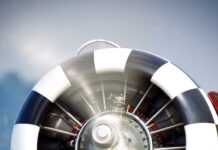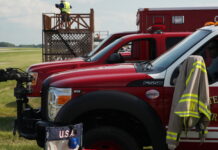Through trial-and-error and hard work, the air show community has settled on de facto best practices in a number of areas. You can benefit from your colleagues’ past experiences to make your event better, more efficient and safer. To that end, we offer the following stress-reducing air show operations best practices.
Logistics: Fuel needs to be at the aircraft when requested. Engine oil and smoke oil should be the type and quantity contracted for and available on arrival. The air show industry standard is that you will have the required equipment (pump, hoses, etc.) to safely deliver smoke oil to the aircraft when requested without making a mess. Water should be plentiful and readily available to all performers. A portable toilet dedicated to performers should be positioned on the ramp and available throughout the day. If you’ve agreed to have hangar space available, ensure that is available for all nights that the aircraft will be there.
Pre-Show Safety Briefing: The safety briefing should be brief and focused on safety. It establishes the standard against which the success of the air operations portion of the show will be measured. Be sure the room in which briefing is held is large enough to handle the expected crowd: performers, crew chiefs, regulatory officials, etc. Also be sure that you have the required equipment: charts, maps, power point computer and projector. All conflicts or possible conflicts should be resolved before the performers leave the briefing room.
CFR (Crash Fire Rescue): It is imperative that CFR personnel learn the ingress/egress procedures of all flying aircraft. If there are shift CFR members working, the new shift personnel need to be familiarized with all procedures. The morning safety and sequence briefing is an excellent place to arrange aircraft visits with crews and CFR folks. The pilots and their crew will welcome the inquiries.
CFR Equipment Placement: CFR vehicles must be at the front of the crowd line with unrestricted, immediate access to the show box and runways. CFR personnel need to be at their equipment ready for immediate response which requires crew rotation or a means of providing them with fluids, food, and a potty.
Vehicles on the ramp: Although some air shows frown on performers driving rental cars on the ramp, performers need to have access to their equipment as well as shade and air conditioning. Many years of experience have demonstrated that allowing rental cars on the ramp is the simplest way to solve these issues.
Reference Line and Corner Markers: As mandated in federal regulatory guidance, the reference line needs to be well-delineated and visible at altitude, particularly when it is not an obvious landmark like the edge of a runway. Corner markers should be highly contrasting and visible from two miles away. Reference lines and corner markers should be marked on an aerial photograph or airport lay-out and pointed out during the pre-show safety briefing.








